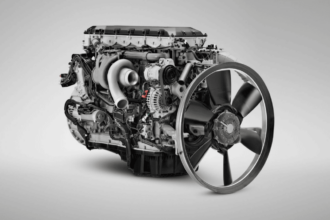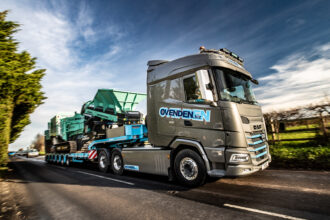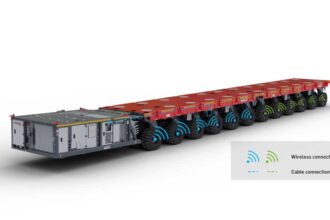ALE completed the load-out of the first jack-up rig for the CAT-J project at the Samsung Heavy Industries Shipyard in South Korea. The jack-up rig, which weighed more than 30,000t, was built on top of supports on a concrete track 20m from the quayside.
ALE used their own unique, self-propelled skidding system and ballasting system to load-out the jack-up rig from the quay onto a floating drydock barge. 76 skid shoes, each equipped with a 650t capacity jack, were installed underneath the rig. By extending these cylinders, the load was transferred from the building supports onto the skidding system.
The three-point hydraulic suspension was created in order to control and check the stability of the system during the load-out. The ALE ballast system was installed beside the internal ballast system of the floating drydock itself. This provided sufficient ballasting capacity for the tide during the load-out and was used to compensate the barge the load was transferred from the skidding system.
Since ALE’s first skidding jobs in the 1980’s, their R&D department has utilised the knowledge gained from previous experience to design the current skidding system. As the system is made completely computerised, all parameters such as wind speed, hydraulic pressures, stroke sensors and heel, trim, can be checked from the control room. Operationally, the computerisation of the system is very beneficial to meet future requirements.
ALE’s Supervisor, Nico den Engelsen, explained how ALE’s innovative new skidding system was instrumental to the project’s success: “In terms of contingency, usability and safety, I truly believe that this improved skidding system is by far the most complete and competitive in the industry. By using the overview from the control room, we could keep the operation easily within the predetermined limits.
“Speaking on behalf of the team, I can say that we are incredibly proud of the system and how it represents the next level of skidding capabilities. We are yet to reach the limits of the system and look forward to continue to push the boundaries again in future projects.”
The CAT-J project involves the creation and delivery of tailor-made rigs for us both surface and subsea wells in the shallow-water segments on the Norwegian continental shelf. The rigs are designed to boost oil recovery with a less expensive, more efficient and safer production process.




